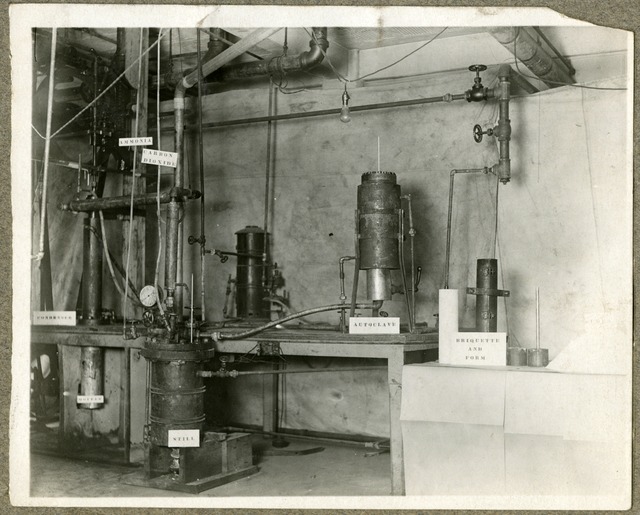Urea, also called carbamide, is an organic compound with chemical formula CO(NH2)2. This amide has two amino groups joined by a carbonyl functional group. It is thus the simplest amide of carbamic acid.
Urea
A plant in Bangladesh that produces urea fertilizer.
Urea plant using ammonium carbamate briquettes, Fixed Nitrogen Research Laboratory, ca. 1930
Metabolism is the set of life-sustaining chemical reactions in organisms. The three main functions of metabolism are: the conversion of the energy in food to energy available to run cellular processes; the conversion of food to building blocks of proteins, lipids, nucleic acids, and some carbohydrates; and the elimination of metabolic wastes. These enzyme-catalyzed reactions allow organisms to grow and reproduce, maintain their structures, and respond to their environments. The word metabolism can also refer to the sum of all chemical reactions that occur in living organisms, including digestion and the transportation of substances into and between different cells, in which case the above described set of reactions within the cells is called intermediary metabolism.
This is a diagram depicting a large set of human metabolic pathways.[image reference needed]
Plant cells (bounded by purple walls) filled with chloroplasts (green), which are the site of photosynthesis
Santorio Santorio in his steelyard balance, from Ars de statica medicina, first published 1614




![This is a diagram depicting a large set of human metabolic pathways.[image reference needed]](https://upload.wikimedia.org/wikipedia/commons/thumb/a/a8/Human_Metabolism_-_Pathways.jpg/640px-Human_Metabolism_-_Pathways.jpg)

